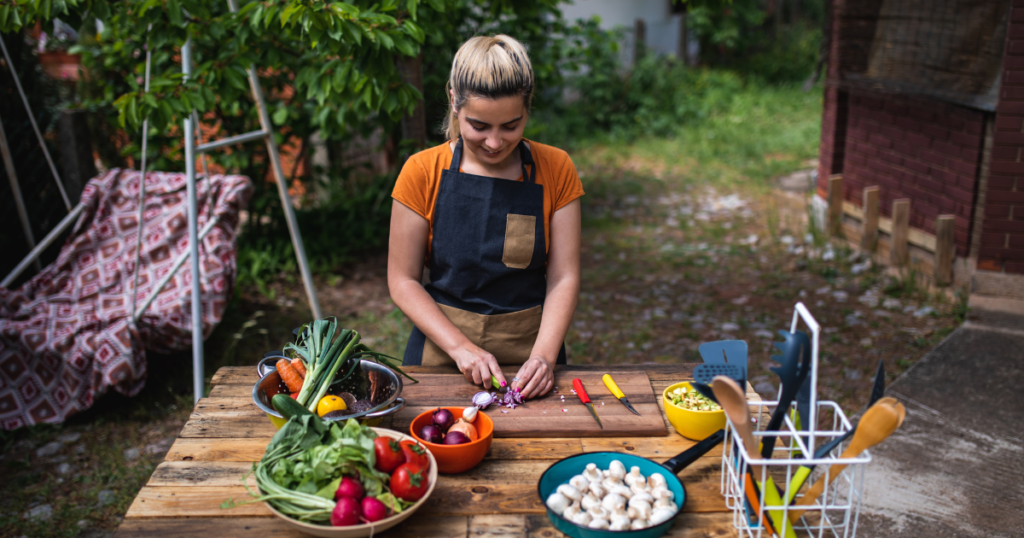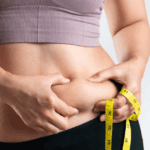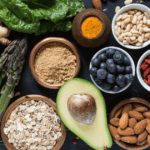Are you struggling to lose your menopause belly? Menopausal symptoms have a major impact on many women’s lives—including their physical shape. During menopause, hormonal changes can lead to extra weight in the abdominal area and an overall decline in muscle mass.
In addition stress, or menopause anxiety can contribute to weight gain around the midsection.
Fortunately, there are solutions that don’t involve any drastic measures or extreme diets. Eating the right foods can help you manage your weight during this stage of life. Below, I share 8 fat-burning foods that will help you reduce your menopause belly.
Hormones and Menopause Belly Fat
A key factor in menopause belly is fluctuating hormones. As women age and estrogen levels start to drop, the body releases more fat-storage hormones such as cortisol. Higher levels of cortisol can lead to greater fat storage in the abdominal area which can lead to an increase in menopausal belly fat. You can take a variety of steps to get rid of this belly fat, and the foods you eat are one of the most impactful.
Stress and Menopause Belly Fat
The transition to menopause can lead to stress for many women. The changes in hormones can cause distress, as well as other life changes that may be happening during this phase such as caring for aging parents or becoming empty nesters.
Stress also causes the body to release cortisol, which can lead to a spike in insulin. When this happens, your blood sugar drops and you crave sugary, fatty foods. And of course, sugary, fatty foods lead to belly fat.
You can find helpful tips for managing menopause anxiety in this article. In addition to reducing stress, following a healthy diet is important in losing belly fat.
8 Foods to Reduce Menopause Belly
1. Salmon
Eating salmon is an excellent way to get Omega-3 fatty acids (aka, healthy fats) into your diet which have been proven to have numerous health benefits including reducing inflammation in the body and improving overall metabolism. Additionally, salmon is high in protein which makes it ideal for muscle repair and building lean muscle.
When choosing your salmon, look for wild-caught Pacific salmon, which is believed to be the healthiest. Most Atlantic salmon is farm-raised and thus lacks some of the nutritional value of its wild-caught Pacific counterpart.
2. Berries
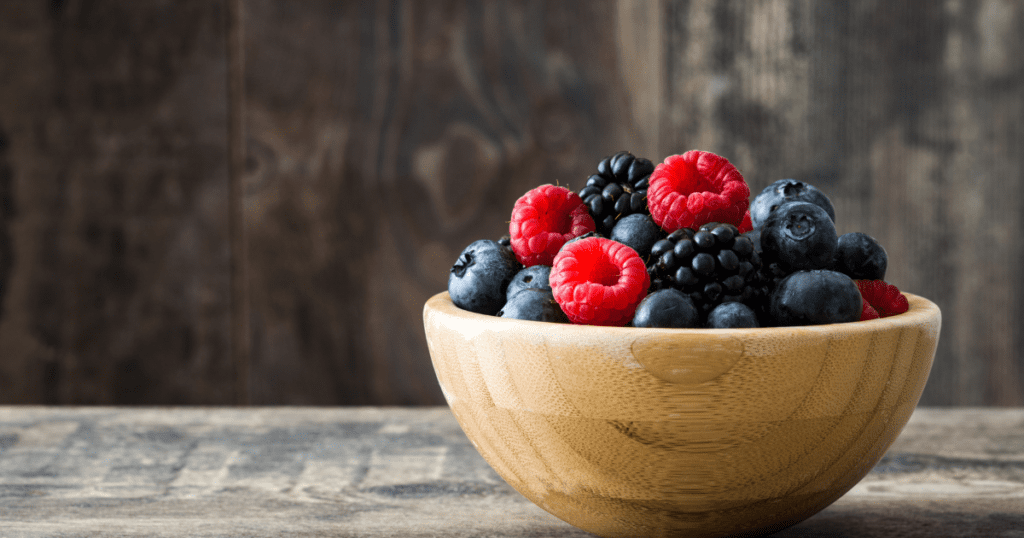
Not only are berries packed with antioxidants and other flavonoids that can help reduce inflammation in the body, but they’re also low in sugar which helps prevent spikes in blood sugar levels. This means better control over cravings, so you don’t feel like snacking between meals.
Additionally, some research suggests that certain compounds found in berries may affect fat stores by helping break them down faster and more efficiently.
You can choose from a variety of berries, including strawberries, raspberries, blueberries, blackberries, and acai.
3. Leafy Greens
Leafy greens are an excellent source of dietary fiber which helps keep your digestive system running smoothly and prevents bloating from poor digestion. Furthermore, leafy greens like spinach and kale contain folic acid which helps slow down the process of aging skin cells around your midsection thus reducing belly fat buildup as well as wrinkles or sagging skin due to weight loss or age-related factors.
If you struggle to get enough leafy greens or vegetables in general, check out this article on how to eat more vegetables.
4. Cruciferous Vegetables
Vegetables such as broccoli, cauliflower, Brussels sprouts, and cabbage contain large amounts of vitamins and minerals that promote good health while providing low calories, so you don’t pack on extra pounds at the same time!
Research has shown that these veggies may also help decrease cortisol production resulting in better metabolic balance and improved insulin sensitivity leading to less fat storage around your waistline.
If you’re not a fan of steamed veggies, try roasting them with a little olive oil, salt, and pepper. My kids will devour any vegetables that are roasted, including Brussels sprouts.
5. Nuts and Seeds
Snacking on small amounts of nuts throughout the day can help keep hunger pangs at bay while providing essential fatty acids needed for optimal energy production while aiding in weight management simultaneously.
Try sprinkling a handful of nuts onto salads or yogurt bowls during mealtimes or choose nut butter spreads on top of toast or mixed into oatmeal.
6. Spicy chili peppers
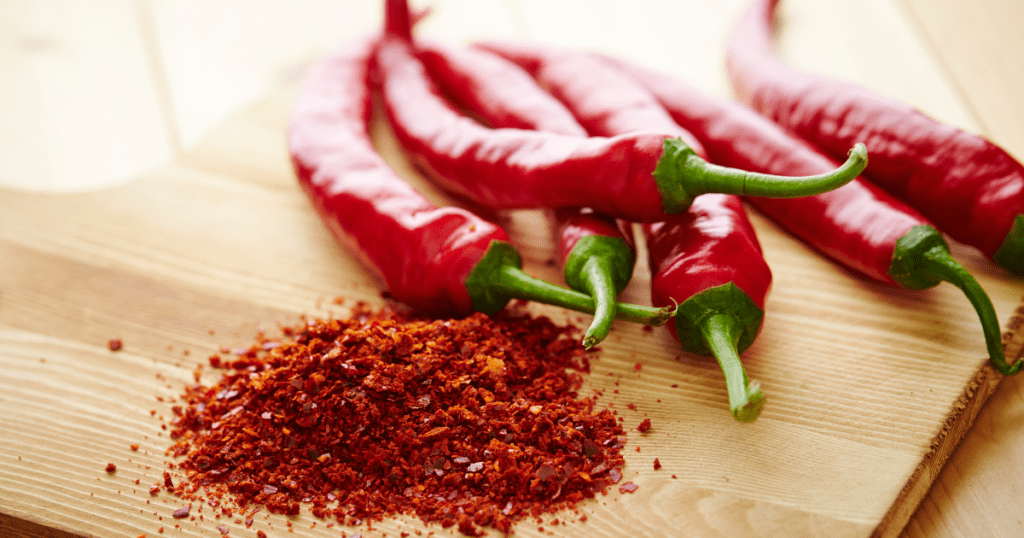
Spicy chili peppers contain a compound called capsaicin. Studies have found that capsaicin facilitates weight loss by suppressing hunger and increasing metabolism.
Chili peppers also have anti-inflammatory and gastroprotective properties. Try adding chili powder or cayenne pepper to soups, stews, or Mexican and Asian dishes. If you’re really brave, you can eat them raw (but be careful!)
7. Lean Meats
Lean meats like chicken breasts or fish contain loads of protein along with healthy doses of iron which play important roles in keeping our energy levels up throughout the day spurring us onward even when we feel fatigued.
Furthermore, lean meats are filled with satiating, muscle-building protein which will keep you full despite their low calories. Try adding chopped rotisserie chicken to a salad for lunch, or broiling fish with your favorite seasonings and a squeeze of lemon for dinner.
8. Grains
Whole grains such as brown rice, oats, or quinoa are great options when trying to lose weight due to their high fiber content helping increase satiety after meals as well as giving us a steady stream of energy throughout the day. This keeps sudden food cravings away while promoting better overall health control during this period of life transition.
Quinoa has the added benefit of being high in protein, which works together with its high fiber content to keep blood glucose levels low. Try adding quinoa to salads or as a side in place of potatoes or pasta.
Foods to Avoid to Get Rid of Menopause Belly
Now that we know which foods we should eat to lose menopause belly fat, let’s review which we should NOT eat.
1. Processed Foods
It probably goes without saying that processed foods like chips and cookies aren’t doing any favors for your waistline. Oftentimes, they’re loaded with salt, sugar, or both. When looking for snacking options, choose whole food options like hummus, olives, or nuts instead.
2. Fast Foods
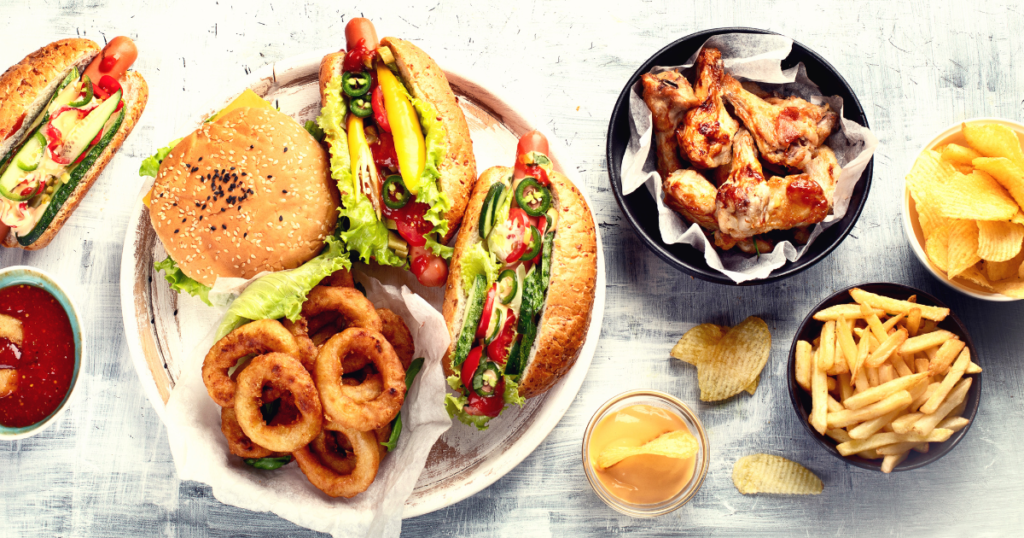
Sure – those fries are delicious. Are they worth it, though? If you’re having a craving, try cutting up some potatoes, tossing in olive oil, salt, and pepper, and popping them in the air fryer at 400 for 10-15 minutes. It’s a much healthier alternative.
3. Saturated Fats
Research has shown that eating saturated fats leads to higher levels of visceral fat and lower levels of muscle mass than eating polyunsaturated fats.
Fatty meats, like bacon and brisket, are high in saturated fats and can lower our serotonin, which can make us grumpy and irritable. Butter, lard, sausage, and cheese are other sources of saturated fats and should be limited.
4. Sugary Foods and Drinks
Sugar consumption may be a primary cause of excess fat around the abdomen. This can lead to insulin resistance and metabolic issues. In addition to sugary foods like cakes and cookies, you should avoid sugary beverages such as sugary sodas and high-sugar sports drinks.
5. Alcohol
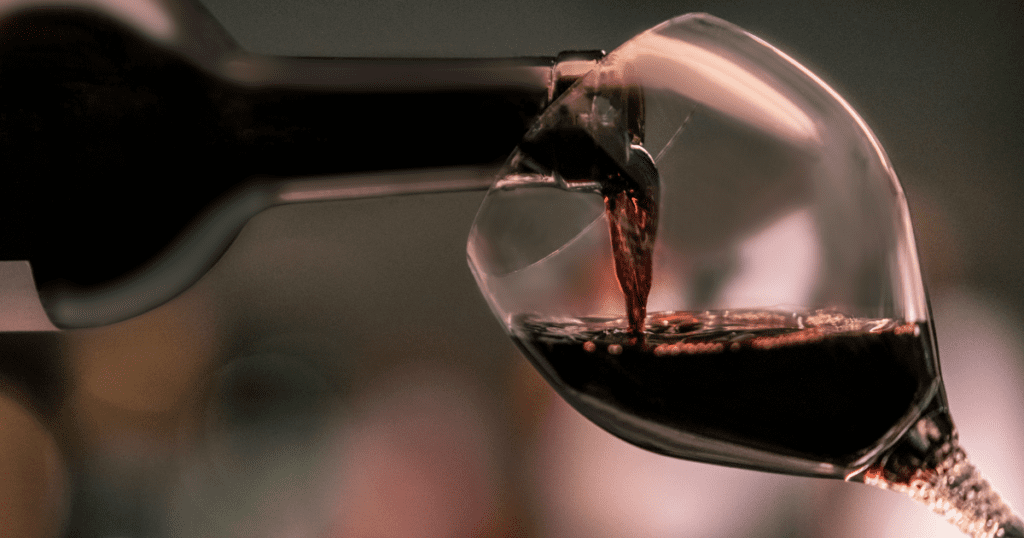
Limiting your alcohol consumption to one drink or less (for women) is recommended when trying to lose, or prevent, menopause belly. There are other health benefits that come along with limiting your intake, such as the reduced risk of breast cancer and heart disease.
Many women in menopause also find that drinking alcohol triggers hot flashes, so that’s another reason to moderate.
Summary
While menopause belly is a common (and annoying) occurrence, there are steps we can take to get rid of it and keep it off. Managing menopause anxiety and exercising are two key strategies to keeping a trim waist. But equally, if not more, important is our diet. Incorporate a few of these 8 foods into your daily diet, and avoid the 5 foods that can contribute to belly fat.
If it’s overwhelming to think about eating healthy all the time, try a 90/10 or 80/20 split. Eat healthy, whole foods 90% of the time. But don’t deny yourself that brownie or glass of wine, just limit it to 10% of the time!
